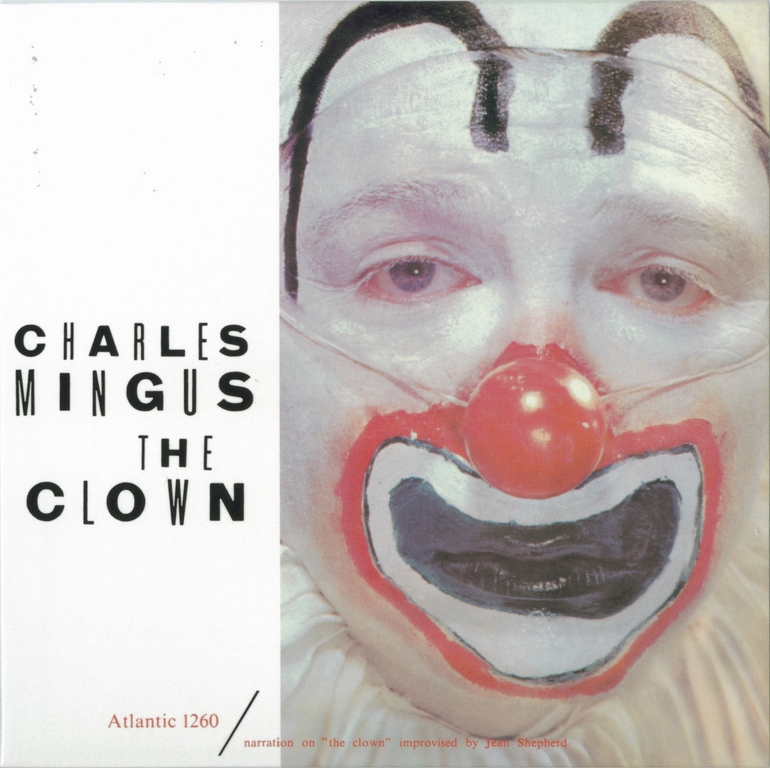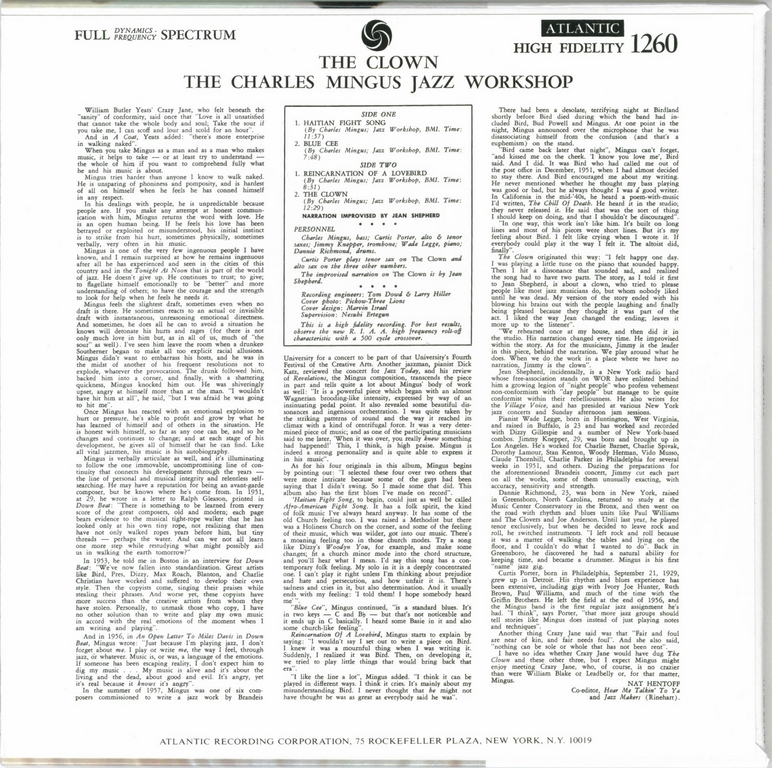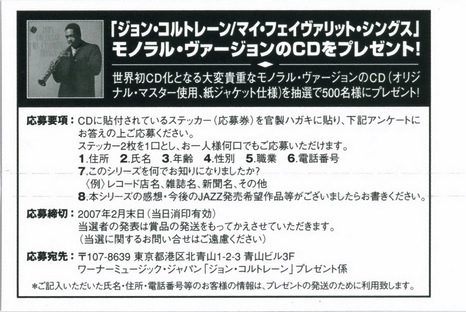




The following excerpts come from the original liner notes and are statements made by Mingus himself.
On “Haitian Fight Song”, Mingus said “[…] It has a folk spirit, the kind of folk music I’ve always heard anyway.[…] My solo in it it’s a deeply concetrated [sic?] one. I can’t play it right unless I’m thinking about prejudice and persecution, and how unfair is it. There’s sadness and cries in it, but also determination. And it usually ends with my feeling ‘I told them! I hope somebody heard me!'”.
“Blue Cee” is a standard blues in two keys, C and Bb, “but that’s not noticeable and it ends up in C, basically”, he said and continued “I heard some Basie in it and also some church-like feeling”.
“Reincarnation of a Lovebird” is a composition dedicated to Bird. “I wouldn’t say I set out to write a piece on Bird. […] Suddenly I realize it was Bird. […] In one way, the work isn’t like him. It’s built on long lines and most of his pieces were short lines. But it’s my feeling about Bird. I felt like crying when I wrote it.”
“The Clown” tells the story of a clown “who tried to please people like most jazz musicians do, but whom nobody liked until he was dead. My version of the story ended with his blowing his brains out with the people laughing and finally being pleased because they thought it was part of the act. I liked the way Jean changed the ending; leaves it more up to the listener.”
review[-]by Steve Huey
The Clown was Charles Mingus’ second masterpiece in a row, upping the already intense emotional commitment of Pithecanthropus Erectus and burning with righteous anger and frustration. With Pithecanthropus, Mingus displayed a gift for airtight, focused arrangements that nonetheless allowed his players great freedom to add to the established mood of each piece. The Clown refines and heightens that gift; instead of just writing heads that provide launch points for solos, Mingus tries to evoke something specific with every piece, and even his most impressionistic forays have a strong storytelling quality. In fact, The Clown’s title cut makes that explicit with a story verbally improvised by Jean Shepherd (yes, the same Jean Shepherd responsible for A Christmas Story) from a predetermined narrative. There are obvious jazz parallels in the clown’s descent into bitterness with every unresponsive, mean-spirited audience, but the track is even more interesting for the free improvisations led by trombonist Jimmy Knepper, as the group responds to Shepherd’s story and paints an aural backdrop. It’s evidence that Mingus’ compositional palette was growing more determinedly modern, much like his increasing use of dissonance, sudden tempo changes, and multiple sections. The Clown introduced two of Mingus’ finest compositions in the driving, determined “Haitian Fight Song” and the ’40s-flavored “Reincarnation of a Lovebird,” a peaceful but melancholy tribute to Charlie Parker; Mingus would return to both throughout his career. And, more than just composing and arranging, Mingus also begins to take more of the spotlight as a soloist; in particular, his unaccompanied sections on “Haitian Fight Song” make it one of his fieriest moments ever. Mingus may have matched the urgency of The Clown on later albums, but he never quite exceeded it.
Charles Mingus – bass
Shafi Hadi – alto and tenor Saxophone
Jimmy Knepper – trombone
Wade Legge – piano
Dannie Richmond – drums
Jean Shepherd – narration
